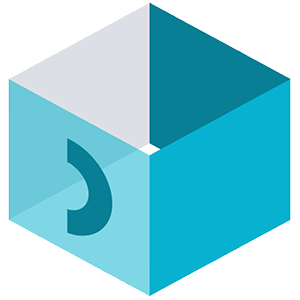How Much Does It Cost to Implement a 3D Configurator?
The adoption of a custom interactive 3D configurator is now a strategic move for companies operating in the world of advanced customization and made-to-order production. This tool turns complex products into accessible, engaging, and guided experiences, improving both sales effectiveness and customer satisfaction.
But one of the first questions that inevitably arises during the evaluation phase is:
How much does it really cost to implement a 3D configurator?
There is no single answer. In fact, an effective 3D configurator is always tailor-made for the client company. It can never be a standardized solution.
However, it is possible to identify:
- The factors that influence the cost of a 3D configurator
- The types of investment involved (one-time, recurring, technical)
- The return on investment in the medium to long term
Initial Investment: More Than Just a Platform
When discussing the cost of a 3D configurator, it’s important to clarify that it’s not just about “software development.” An effective configurator is a complex and integrated system that brings together different technological skills — all essential to ensure a high-quality user experience.
According to Ultramas, a company specialized in developing advanced 3D configurators, the initial budget should take into account:
- Technical analysis and architectural design to define workflows, logic, and compatibility with the existing digital ecosystem
- 3D modeling of products, even in the case of complex items or those with multiple variants
- Integration with business systems such as websites, ERP, CRM, or e-commerce platforms
- Custom user interface design aligned with the brand’s visual identity
- Software development
- Data tracking for KPI measurement
- Testing, debugging, and staff training phases to ensure stability and operational autonomy
How much should you invest?
The range can vary significantly — from a few thousand euros to more structured projects worth tens or even hundreds of thousands, depending on the functional depth, number of products involved, and the level of customization required.
Variable Costs Based on Complexity and Features
The final price of a 3D configurator can vary greatly depending on a set of key factors that determine both technical complexity and user experience quality. There is no “standard” price list, because each project is different and tailored to the specific needs of the company.
Here are the main factors that, according to Ultramas’ experience, have the greatest impact on budget:
- Number of products and configurable variables: the broader the catalog and the more options available, the more complex the configurator’s database — and therefore, the higher the cost.
- Technical complexity: constraints between options, compatibility between modules, and components require sophisticated logic that increases the overall value.
- 3D interactivity and graphics: visual quality, dynamic textures, real-time effects, and support for augmented or virtual reality can significantly raise the price.
- Advanced features: real-time price calculation, automatic quotation generation, machine learning, and other automation tools all contribute to higher system complexity and cost.
A simple 3D configurator may have a limited cost, while an industrial design configurator — with hundreds of rules and complex interactions — represents a far more substantial investment.
ROI: The Tangible Benefits of a Smart Investment
Investing in a 3D configurator is not just about covering development costs — it’s a real accelerator of conversion, efficiency, and competitiveness.
Here are some of the main advantages:
- Higher conversion rates, both online and in showrooms
- Increased average order value (AOV) thanks to visual customization options
- Fewer errors and returns due to clear and realistic 3D visualization
- Optimized sales, production, and post-sales timelines
- Improved customer experience, leading to stronger loyalty
The return on investment should be evaluated not only in direct financial terms but also in terms of competitive advantage: offering a superior buying experience is now one of the most powerful ways to stand out in the market.
To measure the effectiveness of a 3D configurator and guide its evolution, it’s essential to set clear, measurable KPIs that help track results, identify improvement areas, and support marketing and product decisions.
Here are the main KPIs to track:
- Conversion rate: users who complete a configuration or purchase
- Increase in AOV: average order value generated through the configurator
- Reduction in returns: an indicator of consistency between expectations and reality
- Sales cycle length: how long it takes to move from first contact to purchase
- CSAT / NPS: customer satisfaction and likelihood to recommend
- Average configurator usage time: helps assess how much the tool is being used
- Number of configurations saved or shared: signals active engagement and interest
Conclusion
Today, a 3D configurator should be seen as a strategic asset for increasing conversions, improving the purchasing experience, and efficiently managing product complexity.
Investing in this technology means:
- Helping customers make better, faster, and more informed decisions
- Creating a connection with the product even before purchase
- Turning technical complexity into a simple and rewarding experience
With careful planning, a clear vision focused on return on investment, and continuous performance monitoring, a 3D configurator can become a true engine of sustainable growth.
Request a consultation from industry experts!
Ultramas is the right partner to design your custom 3D configurator — integrated, scalable, and ready to generate value from the very first click. Contact us today.
 Ultra-Configurator
Ultra-Configurator